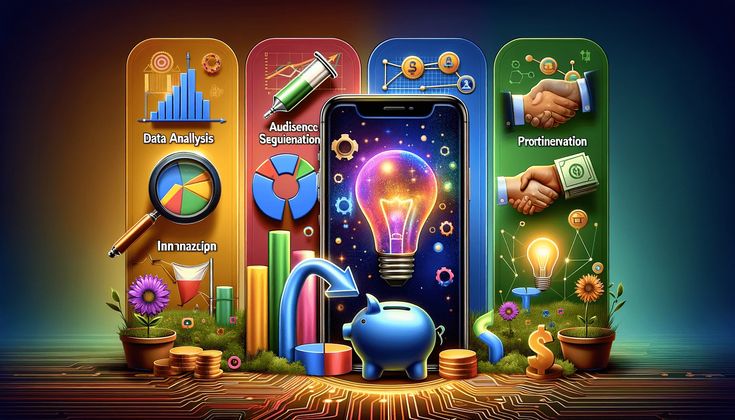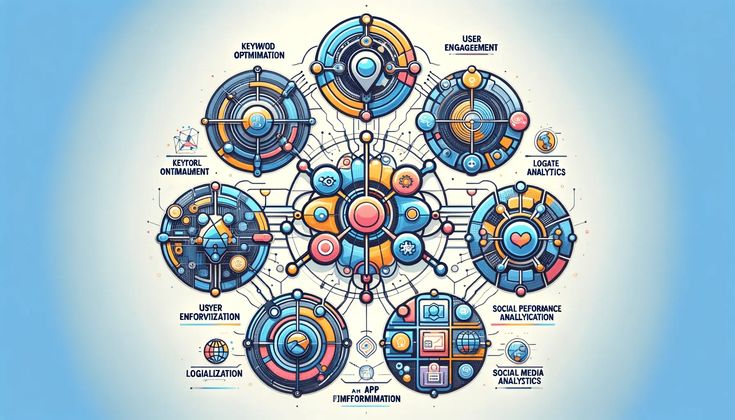The mobile app industry continues to grow at an unprecedented rate, and with that, the competition for user attention has never been fiercer. As we look toward 2025, app marketing strategies will need to adapt and evolve to meet changing consumer behavior, new technological advancements, and emerging trends. To stay ahead, app developers and marketers will need to leverage the latest trends to increase visibility, engage users, and drive growth.
In this blog, we explore the key mobile app marketing trends that are expected to dominate in 2025 and how you can incorporate these strategies into your marketing efforts.
1. Hyper-Personalization of User Experiences
As users demand more relevant and personalized experiences, hyper-personalization will become a critical component of mobile app marketing. By analyzing user behavior, preferences, and engagement patterns, app marketers can deliver tailored content, offers, and recommendations that resonate with individual users.
Key Tactics:
- Dynamic Content: Display personalized content based on users’ activity or preferences within the app.
- Targeted Push Notifications: Send notifications that are specific to users’ interests, location, or previous app interactions.
- AI-Powered Recommendations: Use machine learning algorithms to recommend products, services, or content based on the user’s past behavior and interactions.
A study by Salesforce found that 70% of consumers expect personalized experiences, and nearly 60% are more likely to become repeat customers when they feel like brands understand them. In 2025, delivering hyper-personalized experiences will be critical for apps that want to foster long-term loyalty and maximize user lifetime value (LTV).
2. Video and Interactive Content for Engagement
Video marketing has already taken the digital landscape by storm, but in 2025, the focus will be on integrating video and interactive content directly into apps to boost engagement. Interactive video content and gamified elements will provide users with more engaging experiences, increasing retention and conversion rates.
Key Tactics:
- In-App Video Tutorials: Short, interactive video tutorials within the app to help users understand features and boost onboarding success.
- Live Streaming: In-app live streaming features for events, user interactions, or behind-the-scenes content to foster a sense of community.
- Interactive Ads: Interactive ad formats like playable ads or in-app ad experiences that users can engage with directly.
According to Statista, video content is projected to make up more than 82% of global internet traffic by 2025. As mobile apps increasingly integrate video into their user experience, it will become a powerful tool for increasing user engagement and. retention
3. Voice Search Optimization
Voice search is rapidly becoming one of the most significant ways users interact with their mobile devices. By 2025, more than 55% of households are expected to have a smart speaker, according to Statista. As voice search grows in popularity, optimizing mobile apps for voice search will be crucial for staying competitive.
Key Tactics:
- Voice-Friendly Search Features: Implementing voice-activated features within the app to allow users to search and interact using voice commands.
- Conversational AI: Integrating conversational interfaces, such as chatbots or virtual assistants, to facilitate a more intuitive user experience.
Voice search is expected to revolutionize app discovery and usage, so ensuring that your app is voice-searchable can give you a significant edge over competitors.
4. App Store Optimization (ASO) 2.0
App Store Optimization (ASO) will remain a critical strategy for app visibility in 2025, but the focus will shift towards ASO 2.0, which involves optimizing not only for keywords but also for user engagement metrics, ratings, and reviews. As app stores like the Apple App Store and Google Play evolve, ASO will become more sophisticated, integrating deeper user signals.
Key Tactics:
- User Reviews and Ratings: Actively encouraging reviews from satisfied users and addressing negative feedback to improve rankings.
- Visual Assets Optimization: Optimizing app screenshots, videos, and icons to appeal to potential users.
- Conversion Rate Optimization (CRO): A/B testing your app’s store page to optimize for higher conversion rates.
ASO 2.0 will require a more holistic approach, blending traditional keyword optimization with tactics to improve user engagement, app ratings, and overall app quality.
5. Artificial Intelligence and Automation
AI and automation will continue to transform the way mobile apps are marketed. In 2025, expect more apps to leverage AI-powered tools for everything from personalized content delivery to predictive analytics. Automation will also play a major role in marketing tasks, helping teams streamline campaigns, track performance, and adjust strategies in real time.
Key Tactics:
- Predictive Analytics: Use AI to predict user behavior, such as which users are likely to churn or engage with certain features, enabling targeted interventions.
- Automated Campaigns: Set up automated ad campaigns and social media posts based on user behavior or specific milestones, ensuring timely and relevant communication.
- AI-Powered Chatbots: Implement AI-driven chatbots for better customer support, helping users resolve issues without human intervention.
AI and automation will allow app marketers to optimize their efforts, reduce manual workload, and improve the overall efficiency of their campaigns.
6. Increased Focus on Data Privacy and Security
As data privacy concerns grow, especially with regulations like GDPR and CCPA becoming more stringent, 2025 will see an even greater emphasis on building trust with users through transparent data practices. Apps that prioritize user privacy and security will gain a competitive advantage, as consumers become more selective about which apps they trust with their data.
Key Tactics:
- Privacy Policies: Make your app’s privacy policies clear and accessible, explaining how user data will be collected, stored, and used.
- Transparent Consent: Allow users to control their data preferences, including opting in and out of tracking and data sharing.
- Security Features: Implement robust security measures like encryption, two-factor authentication, and secure payment systems to protect user information.
Building trust with users through transparent privacy and security practices will be essential in 2025.
7. Social Commerce and In-App Purchases
Social media platforms and e-commerce are becoming more integrated than ever before. By 2025, the line between social media and shopping will blur further, with more apps incorporating social commerce features that allow users to purchase directly within the app or via social media channels.
Key Tactics:
- Shoppable Posts: Integrating product links directly into social media posts, enabling users to make purchases directly from platforms like Instagram, Facebook, and TikTok.
- In-App Purchasing: Allowing users to make purchases, subscribe, or unlock premium features directly within the app without needing to leave.
Social commerce will create a seamless buying experience for users and can significantly boost in-app revenue.
Conclusion: Staying Ahead of the Curve
As mobile app marketing continues to evolve, staying ahead of the trends in 2025 will be key to maintaining a competitive edge. By embracing hyper-personalization, video content, voice search optimization, and AI-driven marketing, app developers can improve user acquisition, retention, and engagement. Moreover, prioritizing data privacy and embracing social commerce will be essential for building user trust and driving revenue.
If you’re looking to scale your app or improve your marketing strategy, now is the time to begin integrating these trends into your plans. The future of app marketing is fast-paced, dynamic, and increasingly reliant on cutting-edge technology—so make sure you’re ready for what’s ahead.



